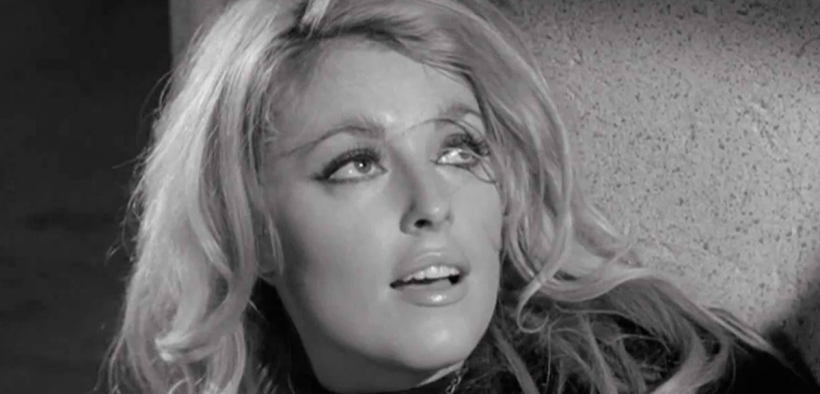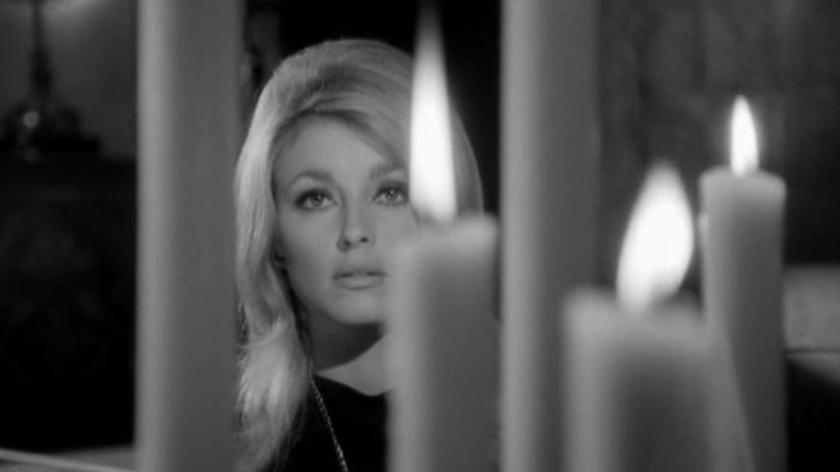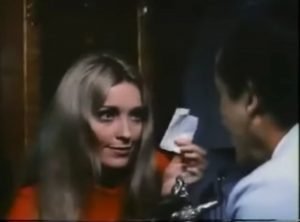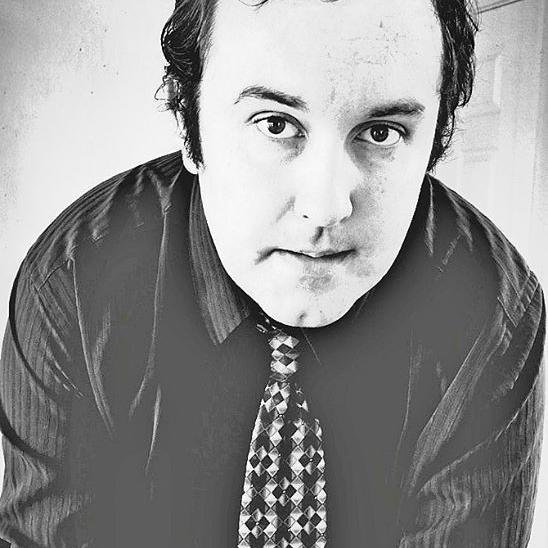Remembering Sharon Tate

Sharon Tate was not just a pretty-faced victim of a psychopathic cult. At 50 years since her murder by the Manson family this August 8-9, and the release of Quentin Tarantino’s Once Upon a Time in Hollywood which has Margot Robbie playing the slain actress, Wess Haubrich looks back on her real contributions to American cinema.
A culture of sensationalism and celebrity has a tendency to only remember certain people as victims. People forget the totality of that person’s life and their larger contributions to the culture. They become specters; Phantoms; Pure ephemera; nothing but formless victims to whatever brutality befell them. This is how ghosts are made – they tend to bedevil the popular mind in direct proportion to the infamy of the crime or disaster that befell them. This tends to be a law of social psychology: just think of any victim of a violent crime who sticks out in your head.
Sharon Tate and the Manson Murders at Fifty
Actress Sharon Tate is arguably the best example of this. You’ll almost certainly know her as the 26-year-old, very-pregnant, actress mercilessly slaughtered with four of her friends by members of the Manson family at her Cielo Drive residence in the Hollywood Hills on the night of August 8-9 in 1969. Drugs and religious insanity fueled the abject brutality of the murders. This added up to a very disturbing demonstration of the id of the “Love Generation”: the coroner at the scene of the Cielo Drive murders called what he saw “an orgy of blood”. This was fairly accurate as Sharon Tate was stabbed 16 times, with five of the wounds being “in and of themselves fatal.”
We should never forget the scope and grizzly nature of what happened to Sharon Tate as the product of the delusional and psychopathic mind of perpetual con artist Charles Manson and his adoring acolytes. “The family” was fueled by LSD and “holy” ramblings of the race war “Helter Skelter” that they were to start by staging the murder scenes of various influential white people to look like the Black Panthers (see the “Pigs” written in blood on the wall of the Cielo drive scene). All this happened with the Beatles’ White Album providing a bizarre psychedelic soundtrack and hallowed background to the brutality (that is where “helter skelter” as a phrase comes from) for Manson and “his family.”
Don’t Lose Track
The insane amount of detail about the murders often bogs down discussions about them; not to mention the multilayered rabbit hole and cult mythology Manson fashioned in order to control, manipulate, and ultimately direct his believers in “the Family” to do the absolutely unthinkable. Rehashing that is not our central task here.
All of this loses sight of Sharon Tate’s cinematic legacy; yet that legacy is essential to understanding her as a beautiful person having that “over the moon” talent her sister, victims’ rights advocate and author Debra Tate (who was supposed to be at Sharon’s house that infamous night – the hottest night of the year no less – but was told at the last minute to stay home) talked to Larry King about in a fantastic interview which is previewed here.
What follows is a look at Sharon Tate on the big screen and small screen with the seven movies and three TV shows she made an appearance on in her short life. These are all essential viewing after seeing Quentin Tarantino’s Once Upon a Time in Hollywood on the big screen with showstopper Margot Robbie playing the slain actress. Tarantino gets a tip of the cap for meeting with Debra before the film premiered – getting her temporary seal of approval in July of last year. Once she was able to see the finished film, Debra actually wept at Robbie’s take on her sister.
So, without further delay, here’s a look at the cinema of Sharon Tate. These are all essential viewing for anyone who sees Once Upon a Time in Hollywood and wants a deeper dive; indeed, some of these titles are part of the film in different ways. Please don’t misunderstand the list below as order of importance, it is purely chronological.
I. Uncredited Early Work, TV, and Barabbas (1961)

Sharon Tate in 1961’s “Barabbas”.
Barabbas is director Richard Fleischer’s (20,000 Leagues Under the Sea, and 1973’s Soylent Green) take on the story of the titular murderer and “notorious prisoner” (Matthew 27:16) who was demanded released by the Jewish crowds instead of Christ, an event leading ultimately to the crucifixion. Anthony Quinn plays Barabbas.
Barabbas sees Sharon Tate’s first appearance on the big screen, even if it is only as “Patrician in Arena”, an uncredited role.
Catch Barabbas here on YouTube for $3.99.
Tate also had an uncredited role in Arthur Hiller’s The Americanization of Emily in 1964. Much of her television work also happened in the early sixties. She was secretary Janet Trengo on The Beverly Hillbillies from 1963 to 1965, had two separate small parts in two episodes of Mr. Ed in 1963, and played a therapist on The Man from U.N.C.L.E. for one episode in 1965. The clip below is Tate in Mr. Ed.
II. Eye of the Devil (1967)

Sharon Tate in 1967’s “Eye of the Devil”.
J. Lee Thompson’s (1961’s The Guns of Navarone) Eye of the Devil is Tate’s only foray into horror. The film sat on the shelf for quite a while. It saw a 1967 U.S. release and a 1968 U.K. release. The production, however, started in 1966. So it sat on the shelf for quite a while. What likely goosed MGM to release it was star David Hemmings having a very successful outing in 1966’s Blow-Up.
The film represents Tate getting into a genre that her husband at the time of the murders – director Roman Polanski – liked to play in: horror. By August 1969, Polanski was world famous for directing the satanic, occult-themed Rosemary’s Baby where Mia Farrow’s character gives birth to the antichrist; not to mention the brilliant and highly underrated psychological horror cult favorite Repulsion in 1965 – a film still deeply influencing directors like Baby Driver’s Edgar Wright.
Eye of the Devil is technically Tate’s debut as her role in Barabbas was uncredited. It’s pretty astounding the filmmakers wrote the part of Odile de Caray specifically for Tate. Indeed, Tate in Eye of the Devil is utterly bewitching. She had such a profound stage presence: commanding the viewer’s attention in such an elegant and seemingly effortless way. These qualities suit her character – a witch aiding in human sacrifices for a bountiful grape harvest at a French winery.
Fans of well-done horror and skillfully-crafted suspense will love Eye of the Devil. It is my personal favorite of Sharon Tate’s catalog. Watch it here on Amazon.
III. Don’t Make Waves (1967)

(L-R) Claudette Cardinale, Tony Curtis, and Sharon Tate in 1967’s “Don’t Make Waves.
Alexander Mackendrick’s (writer of 1957’s Sweet Smell of Success, a film with dialogue so sharp it feels like masters swordsmen dueling) 1967 lampooning of 1960’s surf culture was intended as Tate’s comedic breakout role. Don’t Make Waves tells the story of New York City tourist Carlo Cofield (Tony Curtis) as he falls asleep on a southern California beach while on vacation. He wakes up to a confusing scene: catamarans, surfers, motorcycle chicken races, a crazy man fishing in the shallows.
Tate’s character, the enigmatic and strikingly-beautiful skydiver Malibu, gives Curtis’s character “rapturous” mouth-to-mouth after a flying surfboard knocks him out. This, of course, is the foundation of the comedy in Don’t Make Waves.
Tate as Malibu was the inspiration for the insanely-popular Malibu Barbie which sells 58 million units annually. Tate replaced Julie Newmar who had a scheduling conflict. While the relatively-happy atmosphere on set was shattered when young stuntman Bob Buquor died while doing the necessary skydiving to help bring Tate’s character to life. This affected her state of mind for some time.
Watch Don’t Make Waves on Amazon Prime here.
IV. The Fearless Vampire Killers (1967)

Sharon Tate and Roman Polanski in 1967’s “The Fearless Vampire Killers”.
This comedic horror picture was originally-titled “Pardon Me, but Your Teeth Are in My Neck”. It is all about a professor (played by Jack McGowran) and his rather slow and bumbling assistant (played by Polanski) who fall prey to inquisitive vampires while trying to rescue a rather ominous damsel in distress Sarah (played by Tate). This fatalistic arrangement of characters and their portrayers is an odd omen of events to come two years later.
Polanski met Tate while working on The Fearless Vampire Killers. He almost didn’t, however. Polanski had wanted to use Jill St. John (famous at that time for 1963’s Who’s Minding the Store? with Jerry Lewis and 1965’s The Liquidator with Rod Taylor; in 1971, she would go on to play Tiffany Case in the now classic James Bond film Diamonds are Forever with Sean Connery).
Producer Martin Ransohoff had seen Sharon Tate in her role on The Beverly Hillbillies. This prompted him to recommend her to Polanski. When Jill St. John pulled out because of a scheduling conflict right before shooting in Europe began, all the pieces fell into place.
Tate and Polanski would be married not long after when she broke her engagement off with celebrity hair stylist Jay Sebring, another victim in the house on Cielo Drive. Sebring was keeping his old flame company because she was almost nine months pregnant, and Polanski was on location shooting The Day of the Dolphin (a film he would never finish; Mike Nichols ultimately picked up the reins and completed it for United Artists in 1973).
V. Valley of the Dolls (1967)

Sharon Tate in 1967’s “Valley of the Dolls”.
Mark Robson (1956’s The Harder They Fall – Humphrey Bogart’s last movie) directed this exceedingly-camp adaptation of Jacqueline Susann’s best-selling novel. Tate plays troubled actress Jennifer North (a role that almost went to Raquel Welch) who was conceived as a mixture between Marilyn Monroe and Carole Landis.
Tate was reportedly not too keen on the film or the book. Tate’s performance as actress Jennifer North, especially when the character finds out she has breast cancer, is rather exceptional. This makes Valley of the Dolls Tate’s most remembered film. Perhaps Tate’s disdain there had to do with Mark Robson being abusive to his cast to the point that Tate’s co-star Patty Duke called him “a mean son of a bitch” some years after Robson’s 1978 death from a heart attack.
Even though the film was still panned by critics and found a spot on the “The Fifty Worst Films of All Time (and how they got that way)” list by Harry Medved and Randy Lowell, Valley of the Dolls would be 20th Century Fox’s top box office moneymaker that year and Richard Dreyfuss’s big screen debut. It also garnered composer John Williams his first Oscar nomination; and Sharon Tate a Golden Globe nomination for Best Newcomer – Female.
The studio did not help the film’s image by sanitizing Susann’s original story. They ended up cutting parts of the novel where Tate’s character experiments with lesbianism, Ted Casablanca’s (Alex Davion) homosexuality, and Tony Polar’s (Tony Scotti) penchant for anal sex. It also added a contrived happy ending that enraged Susann and screenwriter Harlan Ellison. The studio re-released Valley of the Dolls after Sharon Tate’s murder.
Watch Valley of the Dolls for $3.99 on YouTube here.
VI. The Wrecking Crew (1968)

Sharon Tate and Dean Martin in 1968’s “The Wrecking Crew”.
Phil Karlson (who would direct the original Walking Tall with Joe Don Baker in 1973) directed this send-up of spy movies with Dean Martin in the lead role of Matt Helm (this movie is part of the Matt Helm series which includes: 1966’s The Silencers and Murderers’ Row, and 1967’s The Ambushers, all starring Dean Martin) and Tate playing a woman who is supposed to help Martin’s character in his nebulous quest that involves a lot of stolen gold (story really becomes irrelevant in film’s like The Wrecking Crew) but causes more issues for him.
While Bruce Lee (played by Mike Moh in Once Upon a Time in Hollywood) was the martial arts advisor to this film, and none other than Chuck Norris makes his screen debut here as an extra, what is most remarkable about The Wrecking Crew is Dean Martin’s behavior after its release. The film didn’t come out until about six months after Tate’s murder. By then, plans for the next entry in the Matt Helm series (titled “The Ravagers”) were already in place. In his grief over his co-stars murder, Dean Martin refused to ever play Matt Helm again. This combined with a poor box office showing killed the franchise.
The Wrecking Crew now is an exceedingly hard film to find. The only version I was able to dig up was a physical copy on Amazon costing (get this): $149.99.
VII. Twelve Plus One (1969)

Sharon Tate in 1969’s “Twelve Plus One”
Nicolas Gessner directs this somewhat-absurd tale about a philandering rich man in search of a chair. Yes, it may sound ridiculously simple, and it is… until he finds out the chair secretly contains something very valuable. The interesting characters he meets along the way (including ones brought to life by none other than Orson Welles and much-beloved British comedian Terry-Thomas) make this a one-of-a-kind flick.
By the time filming commenced in London, Sharon Tate was about three months pregnant. Gessner thus structured the shooting schedule to do her numerous semi-nude scenes first. Gessner hid Tate’s growing shape by using wardrobe devices like scarves or purses. He also would position her behind solid surfaces like tables for certain shots.
Sharon Tate was so much more than a pretty face. Terry-Thomas would say in his 1990 autobiography, “On the first day of filming Twelve Plus One on location in London’s Jermyn Street, Sharon Tate came up and introduced herself. She said, quietly, ‘I must tell you something before we start working together. I can’t act, but I somehow get by without anyone realizing, so don’t worry.’
“Actually, Sharon turned out to share a distinction with Lena Horne – they were the only two performers I ever knew who were entirely ‘natural’ before the camera. Everybody else, method actors (and T-T too!) automatically took on a different stance and manner, as soon as the cameras started rolling. So there were no difficulties with Sharon. We were like a double act. She was nice, intelligent and pretty. I wish I had been able to see the finished film. I’ve never been able to catch it.”
Someone on YouTube posted an interesting montage of all Tate’s scenes from Twelve Plus One. Watch that by going here.
Conclusion: Let’s Celebrate Life
Terry-Thomas’s quote above is a really beautiful distillation of Sharon Tate’s cinematic legacy. She was so much more than another blonde beauty queen; or a victim of the murderous intentions of an apocalyptic madman and his group of twisted devotees. We should remember that while taking in Once Upon a Time in Hollywood; especially as the 50th anniversary of Tate’s slaying approaches this August 8-9.
Let’s celebrate a life; not fetishize a death.







